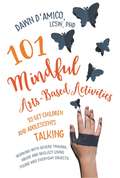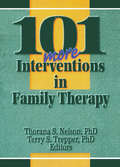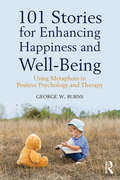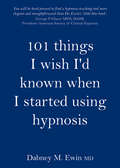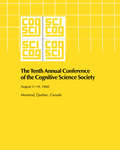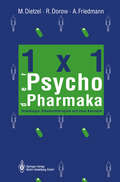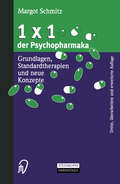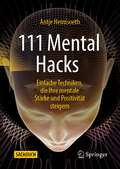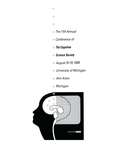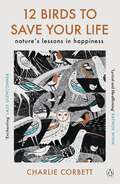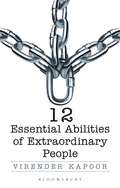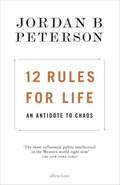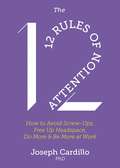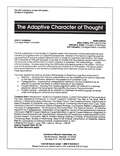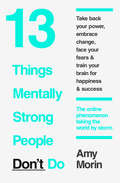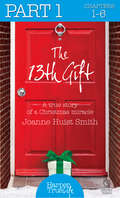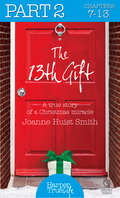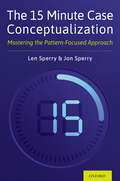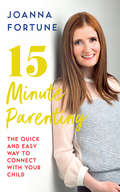- Table View
- List View
101 Mindful Arts-Based Activities to Get Children and Adolescents Talking: Working with Severe Trauma, Abuse and Neglect Using Found and Everyday Objects (PDF)
by Dawn D'AmicoMany children who have experienced serious trauma are withdrawn and closed off, making it difficult to engage with them in therapy effectively. This book offers a compendium of therapeutic activities that will help children who have endured painful abuse to open up, so that they can learn to express their feelings and therapy can be directed towards their individual needs. From useful techniques for bridging memory gaps to using masks for self-expression, the innovative activities use mindfulness, art and play to help children feel relaxed and responsive. The activities require very little preparation, and use only everyday items that are easy to access and can be used time and time again. Case studies throughout offer a helpful demonstration of how the activities work in practice. This is an ideal resource for use with children in therapeutic, home and school settings. It is appropriate to use with children aged 5-17 who have experienced trauma, physical abuse, sexual abuse, forced migration and severe neglect, as well as those with acute depression, anxiety and behavioural difficulties.
101 More Interventions in Family Therapy
by Thorana S Nelson Terry S TrepperInside 101 More Interventions in Family Therapy, you'll discover many revolutionary and flexible strategies for family counseling intervention that you can tailor, amend, and apply in your own practice. Designed to appeal to professionals of beginning, intermediate, or advanced level status, 101 More Interventions in Family Therapy caters to an even broader range of ethnic, racial, gender, and class contexts than did its well-received predecessor, 101 Interventions in Family Therapy. You'll also find that this volume encompasses a wider variety of family therapy orientations, including strategic, behavioral, family of origin, solution-focused, and narrative.In 101 More Interventions in Family Therapy, you'll have at your fingertips a collection of favorite, tried-and-true interventions compiled, revised, and delivered to you by the professionals who use them--the clinicians themselves. You'll gain valuable insight into:effective and useful assessment strategiestherapy that addresses school and career problemsquestions to use in solution-focused therapyquestions to use in narrative therapyideas for resolving intergenerational issuesToo often, the in-the-trenches accounts you need to help add variety and a high success rate to your own practice come to you piecemeal in journals or newsletters. But in 101 More Interventions in Family Therapy, you'll find 101 handy, easy-to-read, and fun ways to modify your own therapeutic styles for a truly diverse variety of clientele and settings right where you want them--in one volume, in one place. Even after a few chapters, you'll discover 101 reasons to be happy with the prospect of improving your practice. Specifically, some of the interesting tips and techniques you'll read about include:applying theater techniques to family therapyusing an alarm clock and rubber band as props in clinical practice with children, couples, and familiesutilizing the “play baby” intervention to coach parents on ways to address their child(ren)'s concernsadopting a “Columbo therapy” approach--one in which the therapist acts confused and asks questions out of a genuine curiosity about the client's experience--to take a one-down position with clientscreating a safe space in therapy and helping clients transfer it into their livesusing homework to increase the likelihood of producing desired therapeutic outcomes
101 More Interventions in Family Therapy
by Thorana S Nelson Terry S TrepperInside 101 More Interventions in Family Therapy, you'll discover many revolutionary and flexible strategies for family counseling intervention that you can tailor, amend, and apply in your own practice. Designed to appeal to professionals of beginning, intermediate, or advanced level status, 101 More Interventions in Family Therapy caters to an even broader range of ethnic, racial, gender, and class contexts than did its well-received predecessor, 101 Interventions in Family Therapy. You'll also find that this volume encompasses a wider variety of family therapy orientations, including strategic, behavioral, family of origin, solution-focused, and narrative.In 101 More Interventions in Family Therapy, you'll have at your fingertips a collection of favorite, tried-and-true interventions compiled, revised, and delivered to you by the professionals who use them--the clinicians themselves. You'll gain valuable insight into:effective and useful assessment strategiestherapy that addresses school and career problemsquestions to use in solution-focused therapyquestions to use in narrative therapyideas for resolving intergenerational issuesToo often, the in-the-trenches accounts you need to help add variety and a high success rate to your own practice come to you piecemeal in journals or newsletters. But in 101 More Interventions in Family Therapy, you'll find 101 handy, easy-to-read, and fun ways to modify your own therapeutic styles for a truly diverse variety of clientele and settings right where you want them--in one volume, in one place. Even after a few chapters, you'll discover 101 reasons to be happy with the prospect of improving your practice. Specifically, some of the interesting tips and techniques you'll read about include:applying theater techniques to family therapyusing an alarm clock and rubber band as props in clinical practice with children, couples, and familiesutilizing the “play baby” intervention to coach parents on ways to address their child(ren)'s concernsadopting a “Columbo therapy” approach--one in which the therapist acts confused and asks questions out of a genuine curiosity about the client's experience--to take a one-down position with clientscreating a safe space in therapy and helping clients transfer it into their livesusing homework to increase the likelihood of producing desired therapeutic outcomes
101 Stories for Enhancing Happiness and Well-Being: Using Metaphors in Positive Psychology and Therapy
by George W. BurnsResearch shows us clearly what works in counseling and psychotherapy. Often by the time clients enter a therapist’s office they have been told what to do—often soundly and sensibly—by well-meaning family, friends, and health professionals. The challenge for the effective therapist is how to communicate these same, sound messages in ways that the client is more likely to take on board, act on, and benefit from. 101 Stories for Enhancing Happiness and Well-Being harnesses the power of stories to translate the research from positive psychology into effective and practical therapeutic interventions. It communicates the core processes for enhancing happiness and well-being in ways that are easy to understand and incorporate into one’s therapeutic practice and clients’ lives.
101 Stories for Enhancing Happiness and Well-Being: Using Metaphors in Positive Psychology and Therapy
by George W. BurnsResearch shows us clearly what works in counseling and psychotherapy. Often by the time clients enter a therapist’s office they have been told what to do—often soundly and sensibly—by well-meaning family, friends, and health professionals. The challenge for the effective therapist is how to communicate these same, sound messages in ways that the client is more likely to take on board, act on, and benefit from. 101 Stories for Enhancing Happiness and Well-Being harnesses the power of stories to translate the research from positive psychology into effective and practical therapeutic interventions. It communicates the core processes for enhancing happiness and well-being in ways that are easy to understand and incorporate into one’s therapeutic practice and clients’ lives.
101 things I wish I'd known when I started using hypnosis
by Dabney EwinAlways read the little book' Charles Dunlap, MD. Dr Dunlap rolled a small library of about 30 books into his medical class and told them it was a monumental compilation of everything that was known about diabetes, published in 1920, before the discovery of insulin. He then held up a book of about 200 pages and said 'this was published in 1930, after the discover of insulin. 'Always read the little book'. Dabney Ewin has been teaching medical hypnosis for the past thirty years and in his experience he believes that a small book is likely to be a clear message by a knowledgeable author. This simple but immensely powerful book is a testament to all the ideas that Dr Ewin wished he had known about when he first starting practising hypnosis. He has sought to make this publication as little as possible, consistent with the message of seeking to take a complicated idea and presenting it in the simplest way.The words and phrases are designed to give any beginning or experienced student a foundation about the working of hypnosis. Divided into five sections with a comprehensive reference section for further reading, this book can be taken one page at a time from the beginning or browsed through randomly.
10th Annual Conference Cognitive Science Society Pod
by Cognitive Science SocietyFirst Published in 1988. A collection of papers, presentations and poster summaries from the tenth annual conference of the Cognitive Science Society in Montreal, Canada August 1988.
10th Annual Conference Cognitive Science Society Pod
by Cognitive Science SocietyFirst Published in 1988. A collection of papers, presentations and poster summaries from the tenth annual conference of the Cognitive Science Society in Montreal, Canada August 1988.
1×1 der Psychopharmaka: Grundlagen, Standardtherapien und neue Konzepte
by Margot Dietzel Rainer Dorow Alexander FriedmannDieses "klinisch ausgerichtete" Lehrbuch weist den jungen Klinikarzt in die psychopharmakologische Behandlung ein. Es verschweigt dabei nicht, welche Schwierigkeiten im Verlauf einer psychopharmakologischen Therapie entstehen können. Außergewöhnlich viele Fallbeispiele machen das Buch lebendig und führen von der trockenen Theorie sofort in das tägliche Arbeitsleben des behandelnden Arztes. Es wird praxisnah und nachvollziehbar dargestellt, in welcher Form Psychopharmakologie und Psychotherapie zusammenarbeiten müssen. Bei der Diagnostik der einzelnen Fälle wird jedem auffallen, daß keine Schulen und keine psychopharmakologischen Hypothesen vertreten werden, sondern lediglich anwendungsgerechtes Therapieren. Schritt für Schritt läßt sich nachvollziehen, welche Entscheidungen der behandelnde Arzt nach klinischen Gesichtspunkten und therapeutischen Überlegungen zu fällen hat.
1×1 der Psychopharmaka: Grundlagen, Standardtherapien und neue Konzepte
by Margot SchmitzDas klinisch ausgerichtete Lehrbuch führt anhand von zahlreichen Fallbeispielen in die psychopharmakologische Therapie ein. Studenten, Psychotherapeuten und solche Ärzte, die sich mit den Möglichkeiten und Grenzen der Psychopharmakologie vertraut machen wollen, finden hier eine praxisnahe Darstellung in welcher Form Psychopharmakologie und Psychotherapie zusammenarbeiten müssen. Eine klare Gliederung in Substanzen erster und zweiter Wahl erlaubt eine rasche Orientierung. Schritt für Schritt ist nachvollziehbar, welche Entscheidung der behandelnde Arzt nach klinischen Gesichtspunkten und therapeutischen Überlegungen zu fällen hat. Die Autoren legen besonderen Wert auf die individuelle Therapie und möchten nicht psychopharmakologischen Hypothesen das Wort geben.
111 Mental Hacks: Einfache Techniken, die Ihre mentale Stärke und Positivität steigern
by Antje HeimsoethDas menschliche Gehirn ist „plastisch“, d.h. es ist in der Lage sich zu verändern. Die Hirnforscher nennen dies Neuroplastizität, was bedeutet, dass Sie Ihr Gehirn buchstäblich neu verdrahten können. Warum nicht die Arbeitsweise Ihres Gehirns nutzen?Wir sind für unseren eigenen Erfolg verantwortlich. Die Einstellung macht´s. So können Sie mit mentaler Stärke Ihre Performance, Ihre mentale Gesundheit, Ihr Leben und vieles mehr verbessern. Dieses Buch mit vielen Grafiken und Abbildungen liefert dafür Erkenntnisse, Erfahrungen, effektive Techniken und einfach im Alltag anzuwendende Hacks.
11th Annual Conference Cognitive Science Society Pod
by Cognitive Science Cognitive Science SocietyFirst published in 1989. Routledge is an imprint of Taylor & Francis, an informa company.
11th Annual Conference Cognitive Science Society Pod
by Cognitive Science Cognitive Science SocietyFirst published in 1989. Routledge is an imprint of Taylor & Francis, an informa company.
12 Birds to Save Your Life: Nature's Lessons in Happiness
by Charlie CorbettFind solace, hope and happiness through 12 fascinating birds whose song is never far away - if only we know where to look . . .'A lyrical and life-affirming book that teaches us as much about birds as it does ourselves - a balm for the soul' Raynor Winn, author of The Salt Path'Charlie has opened my eyes to the constant joy of the sights and sounds of the birds that surround us. It is a book that really will save lives' Dr Richard Shepherd, author of Unnatural Causes_________Can you recognise the cheerful chirrups of the house sparrow? A song thrush singing out at winter's darkest hour? Or the beautiful haunting call of the curlew?At a time of great anxiety and uncertainty, while coping with the untimely death of his mother, Charlie Corbett realised his perspective on life was slipping. In a moment of despair, he found himself lying on the side of a hill in the rain, alone with his thoughts.Suddenly he hears the song of a skylark - that soaring, tinkling, joyous sound echoing through the air above - and he is transported away from his dark thoughts. Grounded by the beauty of nature, perspective dawns. No longer the leading role in his own private melodrama, merely a bit part in nature's great epic.Through twelve characterful birds, Charlie shows us there is joy to be found if we know where to look, and how to listen. From solitary skylarks to squabbling sparrows, he explores the place of these birds in our history, culture and landscape, noting what they look like and where you're most likely to meet them.By reconnecting with the wildlife all around him and learning to move with the rhythms of the natural world, Charlie discovered nature's powerful ability to heal.In this life-affirming and joyful guide to the birds living all around us, it might just heal you too.
12 Essential Abilities Of Extraordinary People
by Virender KapoorExtraordinary people aren't just born fully formed. They don't just emerge out of slogans and rhetoric. They work towards making a positive, palpable change. These people are what they are because they wanted to be what they are.This book isn't about changing the way you dress or learning to master punctuality – it's about serious life altering traits which dig deep into your DNA to turn you around as a person. These traits – which Gandhi, Lincoln, Helen Keller, Tendulkar, Tata or Eisenhower had – are viewed as god's gift. Just because we're not born with them, it doesn't mean we can't learn to become that way. If you want to become an effective person, regardless of where you stand in life's continuum – a college student, a working professional, an entrepreneur or a CEO- this book is for you. It will be you mentor; explaining, demonstrating and guiding you through each of this trait which make great people. If you want to work on yourself – go for it.
12 Rules for Life: An Antidote to Chaos
by Jordan B. PetersonJordan Peterson's work as a clinical psychologist has reshaped the modern understanding of personality, and now he has become one of the world's most popular public thinkers, with his lectures on topics ranging from the Bible to romantic relationships drawing tens of millions of viewers. In an era of polarizing politics, echo chambers and trigger warnings, his startling message about the value of personal responsibility and the dangers of ideology has resonated around the world.In this book, he combines ancient wisdom with decades of experience to provide twelve profound and challenging principles for how to live a meaningful life, from setting your house in order before criticising others to comparing yourself to who you were yesterday, not someone else today. Gripping, thought-provoking and deeply rewarding, 12 Rules for Life offers an antidote to the chaos in our lives: eternal truths applied to our modern problems.
The 12 Rules of Attention: How to Avoid Screw-Ups, Free Up Headspace, Do More & Be More At Work
by Joseph CardilloHow to self-regulate and train your brain's attentional mechanism for faster, more accurate, high-quality performance at work.Do you feel like you're "crushing it?" How productive, happy and fulfilled do you feel each day at your job?You might ask what attention has to do with it. The answer may help fix a wide range of ongoing workplace concerns, including workplace error.Simply put, attention is connected to every single thing you think, feel and do at work. It's almost impossible to imagine, but by the end of this book you'll understand how that is, and you'll be tapping into your attentional system and regulating it to your highest advantage.You'll learn how to:* Use your entire attentional system, beyond just focus* Avoid fading out * Relieve data overflow, internal and external distraction * Use "at a glance" mental capacity to "catch" more desired detail * Regulate the brain's automatic, high-speed attention triggers and use them to your advantage* Turn your cell phone into a focus-enhancing device.The 12-Rules of Attention shows you how to train your attention to sharp, accurate, high definition... and keep it there.
12th Annual Conference. C.S.S. Pod
by John R. AndersonThe first volume of a series on Cognition. Looking at Memory, Catergorization, Causal Inference and Problem Solving. First Published in 1990. Routledge is an imprint of Taylor & Francis, an informa company.
12th Annual Conference. C.S.S. Pod
by Alex QuiliciThe first volume of a series on Cognition. Looking at Memory, Catergorization, Causal Inference and Problem Solving. First Published in 1990. Routledge is an imprint of Taylor & Francis, an informa company.
13 Things Mentally Strong People Don’t Do: Take Back Your Power, Embrace Change, Face Your Fears And Train Your Brain For Happiness And Success
by Amy MorinThe ultimate guide to mastering your mental strength with revolutionary new strategies that work of everyone.
The 13th Gift: Part One (HarperTrue Life – A Short Read)
by Joanne Huist SmithA true Christmas story of a family suffering their darkest moments finding strength and love from a surprise Christmas miracle.
The 13th Gift: Part Two (HarperTrue Life – A Short Read)
by Joanne Huist SmithA true Christmas story of a family suffering their darkest moments finding strength and love from a surprise Christmas miracle.
The 15 Minute Case Conceptualization: Mastering the Pattern-Focused Approach
by Jonathan Sperry Len SperryOnce understood as useful but optional, case conceptualization is now considered essential and one of the most important of all clinical skills and competencies. As clinicians look for resources to assist in learning and mastering this competency, they must choose among different case conceptualization approaches considering those that are both clinically effective and clinician friendly. A truly clinically effective approach explains and guides treatment, and most importantly, predicts challenges and obstacles that are likely to arise over the course of treatment. Most approaches emphasize explaning and guiding treatment, but seldom include third function which helps anticipate likely challenges, which if not proactively addressed, are likely to result in therapy interference or premature termination. Research shows that such case conceptualization is essential in determining the course and overall effectiveness of therapy. This essential task can be completed in as little as fifteen minutes. A truly clinician-friendly approach is one that is quick to use and easy to master. The 15 Minutes Case Conceptualization is evidence-based, step-by-step approach that is both highly effective and clinician friendly.
The 15 Minute Case Conceptualization: Mastering the Pattern-Focused Approach
by Len Sperry Jonathan SperryOnce understood as useful but optional, case conceptualization is now considered essential and one of the most important of all clinical skills and competencies. As clinicians look for resources to assist in learning and mastering this competency, they must choose among different case conceptualization approaches considering those that are both clinically effective and clinician friendly. A truly clinically effective approach explains and guides treatment, and most importantly, predicts challenges and obstacles that are likely to arise over the course of treatment. Most approaches emphasize explaning and guiding treatment, but seldom include third function which helps anticipate likely challenges, which if not proactively addressed, are likely to result in therapy interference or premature termination. Research shows that such case conceptualization is essential in determining the course and overall effectiveness of therapy. This essential task can be completed in as little as fifteen minutes. A truly clinician-friendly approach is one that is quick to use and easy to master. The 15 Minutes Case Conceptualization is evidence-based, step-by-step approach that is both highly effective and clinician friendly.
15-Minute Parenting: The Quick and Easy Way to Connect with Your Child
by Joanna FortuneParenting is for life – 7 days a week, 24 hours a day – and while it is one of the most rewarding experiences life can offer it can also be frustrating when faced with challenging behaviour. But what if just 15 minutes of mindful playtime each day in you and your child’s routine could change all that? Play is the language of children. It is how they communicate. By rediscovering the joy of play as an adult, you can access a whole new way to understand and respond to your child’s needs.Created with busy mums and dads in mind, psychotherapist and parenting expert Joanna Fortune has devised a unique childcare method structured around 15-minute games that can be easily incorporated into your existing daily routine. From newborns to the age of seven, her techniques are underpinned by research, neuroscience and therapeutic theories and are designed to address common behavioural issues you will meet as your child grows, including: AnxietyLashing outWhiningBoredomSibling rivalryDemands for independence15 Minute Parenting contains everything your child needs to grow into a happy, confident and resilient adult – it’s child’s play!
